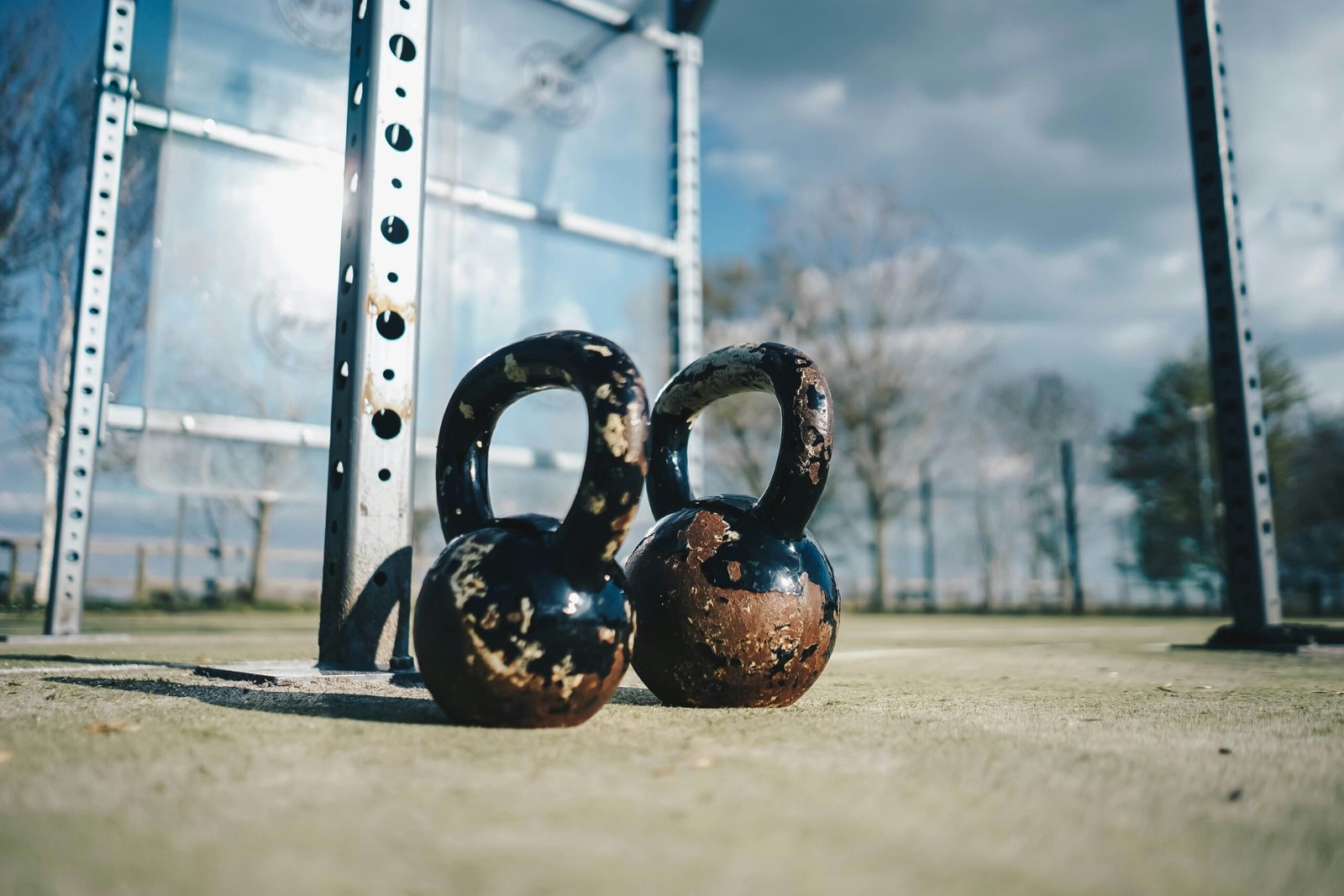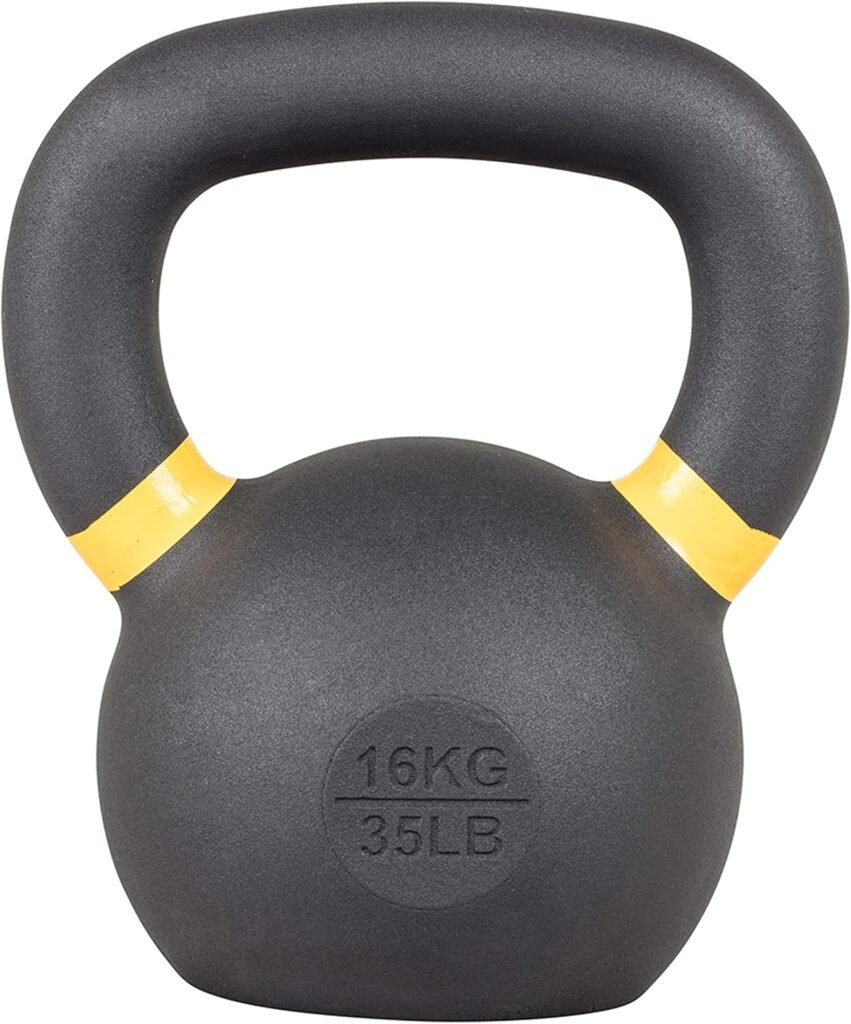Have you ever wondered how kettlebells could transform your workouts and boost your everyday strength? If you’re looking to enhance your functional fitness, kettlebells may just be the perfect addition to your routine.
You are currently viewing a placeholder content from YouTube. To access the actual content, click the button below. Please note that doing so will share data with third-party providers.
What Is Functional Fitness?
Functional fitness is all about performing movements that resemble everyday activities, helping you build strength, flexibility, and endurance for real-life tasks. Unlike traditional bodybuilding, which often focuses on isolating muscle groups, functional fitness emphasizes the interconnectedness of your body’s movements. This approach not only improves athletic performance but also reduces your risk of injury during daily activities.
Why is Functional Fitness Important?
Functional fitness is crucial because it prepares you to handle life’s daily challenges. Whether it’s lifting groceries, playing with your kids, or moving furniture, these everyday activities require a combination of strength, coordination, balance, and flexibility. By enhancing functional fitness, you can improve your quality of life, maintain your independence as you age, and enjoy a more active lifestyle.
Kettlebells: The Ultimate Functional Fitness Tool
Kettlebells have gained significant popularity in the fitness community, and for good reason. Their unique shape and design allow you to perform a wide array of exercises that engage multiple muscle groups simultaneously. This multi-dimensional aspect of kettlebell training can greatly contribute to your overall functional fitness.
Benefits of Kettlebell Training
Using kettlebells comes with a multitude of benefits, including:
- Full-Body Engagement: Almost every kettlebell exercise involves multiple joints and muscle groups. This means while you’re working your upper body, your core and lower body are also engaged.
- Versatility: Kettlebells can be used for strength training, cardio workouts, and flexibility exercises. This makes them perfect for anyone looking to enhance different aspects of fitness.
- Improved Stability: The offset center of mass in kettlebells challenges your stability and coordination, promoting better balance and body control.
- Time-Efficient Workouts: Most kettlebell exercises can be done in a short amount of time for maximum effectiveness, making it easier to fit workouts into your busy schedule.

Key Kettlebell Exercises for Functional Fitness
To get the most out of your kettlebell training, here are some key exercises you should consider incorporating into your routine. Each of these exercises will help build functional strength, improve your coordination, and develop stabilization in your daily movement patterns.
Kettlebell Swing
The kettlebell swing is one of the most iconic kettlebell exercises, and for good reason. It targets multiple muscle groups, including your glutes, hamstrings, core, and shoulders.
How to Perform:
- Stand with feet slightly wider than shoulder-width apart, holding a kettlebell with both hands between your legs.
- Hinge at your hips and bend your knees slightly as you swing the kettlebell back.
- Powerfully thrust your hips forward, allowing the kettlebell to swing up to shoulder height.
- Control the descent by letting the kettlebell swing back between your legs.
Goblet Squat
The goblet squat is an excellent way to improve lower body strength and mobility, mimicking the movement pattern of sitting down and standing up.
How to Perform:
- Hold a kettlebell close to your chest with both hands, standing with your feet shoulder-width apart.
- Lower yourself into a squat while keeping your chest up and elbows inside your knees.
- Push through your heels to return to the starting position.
Kettlebell Deadlift
Kettlebell deadlifts are great for building strength in your posterior chain, including your back, glutes, and hamstrings.
How to Perform:
- Place a kettlebell on the floor between your feet and stand over it with your feet hip-width apart.
- Bend at the hips and knees to grasp the kettlebell with both hands.
- Keep your back straight as you push through your heels and lift the kettlebell off the ground, standing tall.
- Lower the kettlebell back to the ground in a controlled manner.
Kettlebell Turkish Get-Up
Though it might seem complex, the Turkish get-up is an effective exercise for improving strength, balance, and coordination throughout your entire body.
How to Perform:
- Lie on your back with a kettlebell in your right hand, arm extended upwards.
- Bend your right knee and place your foot flat on the floor.
- Use your left hand to push yourself up onto your left elbow and then to your hand.
- Raise your hips off the ground, and bring your left leg underneath you into a kneeling position.
- Stand up, then reverse the steps to return to the starting position.
Kettlebell Clean and Press
This exercise combines the clean and press movements, engaging your whole body and building strength in various muscle groups.
How to Perform:
- Start with a kettlebell on the floor between your feet.
- Hinge at your hips to lift the kettlebell off the ground, pulling it up towards your shoulder.
- Rotate your wrist and place the kettlebell in the “rack” position at your shoulder.
- Press the kettlebell overhead, then lower it back to the starting position.
Building a Kettlebell Workout Routine
Now that you’re familiar with some key kettlebell exercises, let’s discuss how to build a workout routine that effectively enhances your functional fitness.
Assess Your Fitness Level
Before starting any new fitness program, it’s important to assess your current fitness level. This will help you choose the appropriate weights and exercises. If you’re new to kettlebell training, starting with a lighter weight is advisable to learn proper form and technique.
Determine Workout Frequency
You don’t need to spend hours in the gym to see results. Aiming for two to three kettlebell workouts per week can be very effective. It’s essential to incorporate rest days for recovery, allowing your muscles to heal and grow stronger.
Sample Kettlebell Workout Routine
Here’s a simple routine you might consider starting with:
| Exercise | Sets | Reps |
|---|---|---|
| Kettlebell Swing | 3 | 15-20 |
| Goblet Squat | 3 | 10-12 |
| Kettlebell Deadlift | 3 | 10-12 |
| Kettlebell Turkish Get-Up | 3 | 5-6 per side |
| Kettlebell Clean and Press | 3 | 8-10 |
Incorporate Progressions
As you become more comfortable with these exercises, don’t hesitate to progress by adding more weight, increasing reps, or varying the tempo. This will continue to challenge your body and prevent plateaus in your training.

Combining Kettlebell Training with Other Modalities
Kettlebells are incredibly versatile, but they can also complement other training modalities for a well-rounded fitness approach.
Incorporating Cardio
If you want to increase your cardiovascular endurance, consider incorporating kettlebell exercises into a high-intensity interval training (HIIT) format. Alternating between kettlebell training and cardio-intensive exercises like burpees or jumping jacks can keep your workouts engaging and effective.
Adding Resistance Bands
For increased resistance and varied movements, integrating resistance bands can elevate your training. Use bands for additional pre-activation before kettlebell lifts or as added resistance during bodyweight exercises.
Stretching and Mobility Work
Don’t forget about the importance of flexibility and mobility in functional fitness. Incorporating stretching or yoga sessions can promote recovery and enhance your movement quality.
Safety Tips for Kettlebell Training
In any strength training routine, safety must remain a priority. Here are some helpful tips to keep in mind while kettlebell training:
- Focus on Form: Prioritize proper form over lifting heavier weights. This will help prevent injury and ensure you’re targeting the correct muscle groups.
- Warm-Up: Take a few minutes to warm up your body before beginning your kettlebell workout, focusing on dynamic stretches and movements to prepare your muscles.
- Listen to Your Body: Pay attention to any signs of pain or discomfort. If something doesn’t feel right, stop and reassess your form or technique.

Common Mistakes to Avoid
As with any workout, there are common mistakes that beginners often make when it comes to kettlebell training. Being aware of these pitfalls can help you get the most out of your kettlebell exercises.
Using Too Much Weight
One of the most common mistakes is overestimating your ability by using excessively heavy kettlebells. Start lighter until you’re comfortable with the movements, then gradually increase the weight.
Forgetting Core Engagement
Kettlebell movements require strong core engagement to maintain stability and control during exercises. Always focus on bracing your core throughout each movement.
Neglecting Recovery
Recovery is vital for long-term success, as it allows your muscles to heal and grow stronger. Ensure you’re allowing adequate time for recovery between kettlebell workouts.
The Importance of Nutrition
Your performance and the effectiveness of your workouts can also greatly benefit from proper nutrition. A balanced diet that includes a mix of macronutrients—carbohydrates, proteins, and fats—can help fuel your training sessions and promote recovery.
Hydration
Don’t forget to stay hydrated, especially during workouts. Water plays a crucial role in your overall performance and recovery, so aim to drink plenty of fluids before, during, and after your training sessions.
Meal Timing
Consider eating a balanced meal or snack containing carbohydrates and protein before and after your kettlebell workouts. This can boost your energy levels before exercise and replenish your muscle glycogen post-workout.
Conclusion
Kettlebells can significantly enhance your functional fitness and improve your ability to perform everyday tasks with ease. By incorporating key exercises into your routine, staying mindful of your form, and complementing your training with other practices, you can cultivate a stronger and more capable body. The journey to fitness is ongoing, but with kettlebells in your toolkit, you’re well on your way to mastering your functional fitness goals.
So, get ready to pick up that kettlebell, strengthen your movement, and enjoy the positive changes in your daily life!






